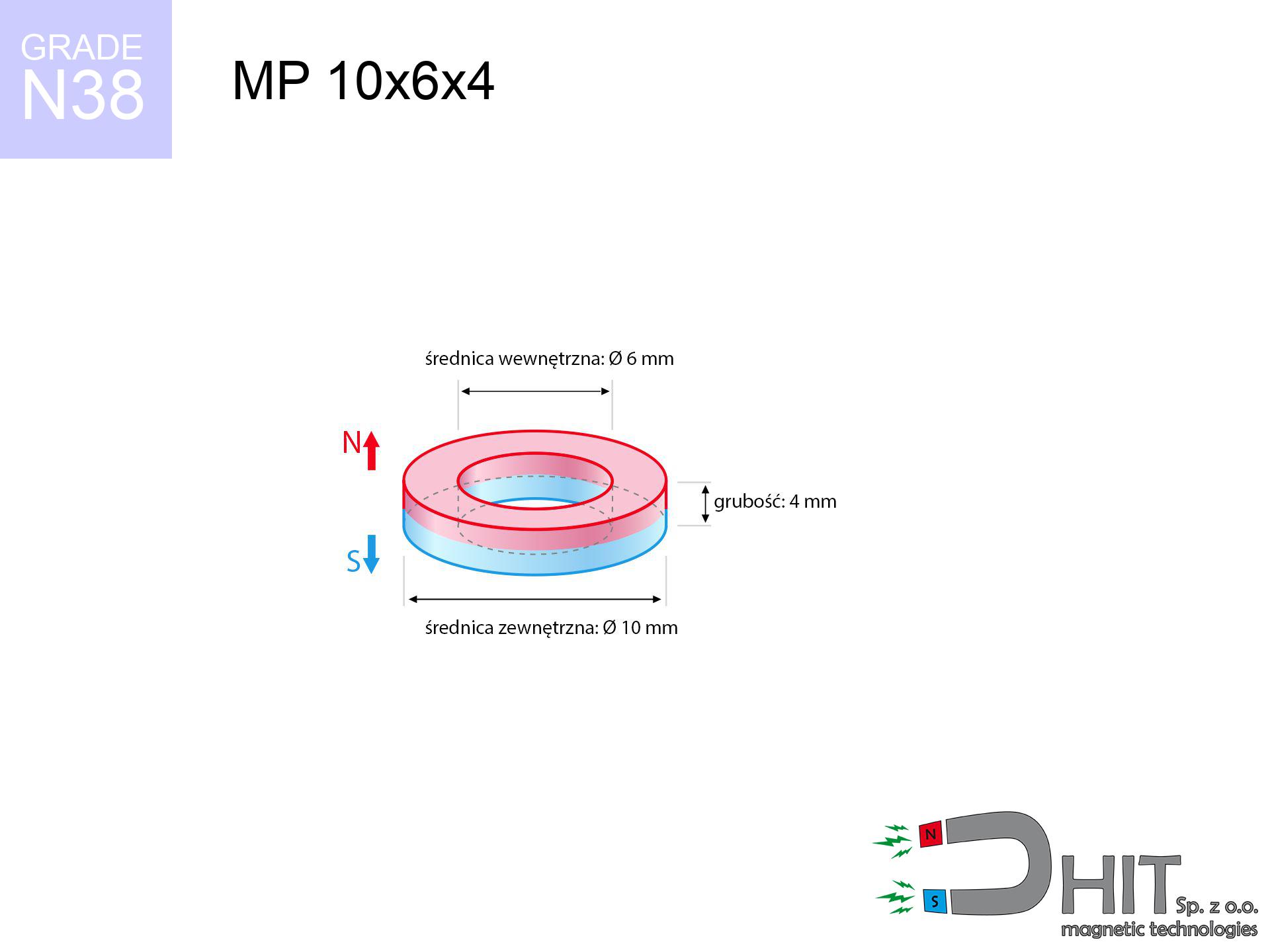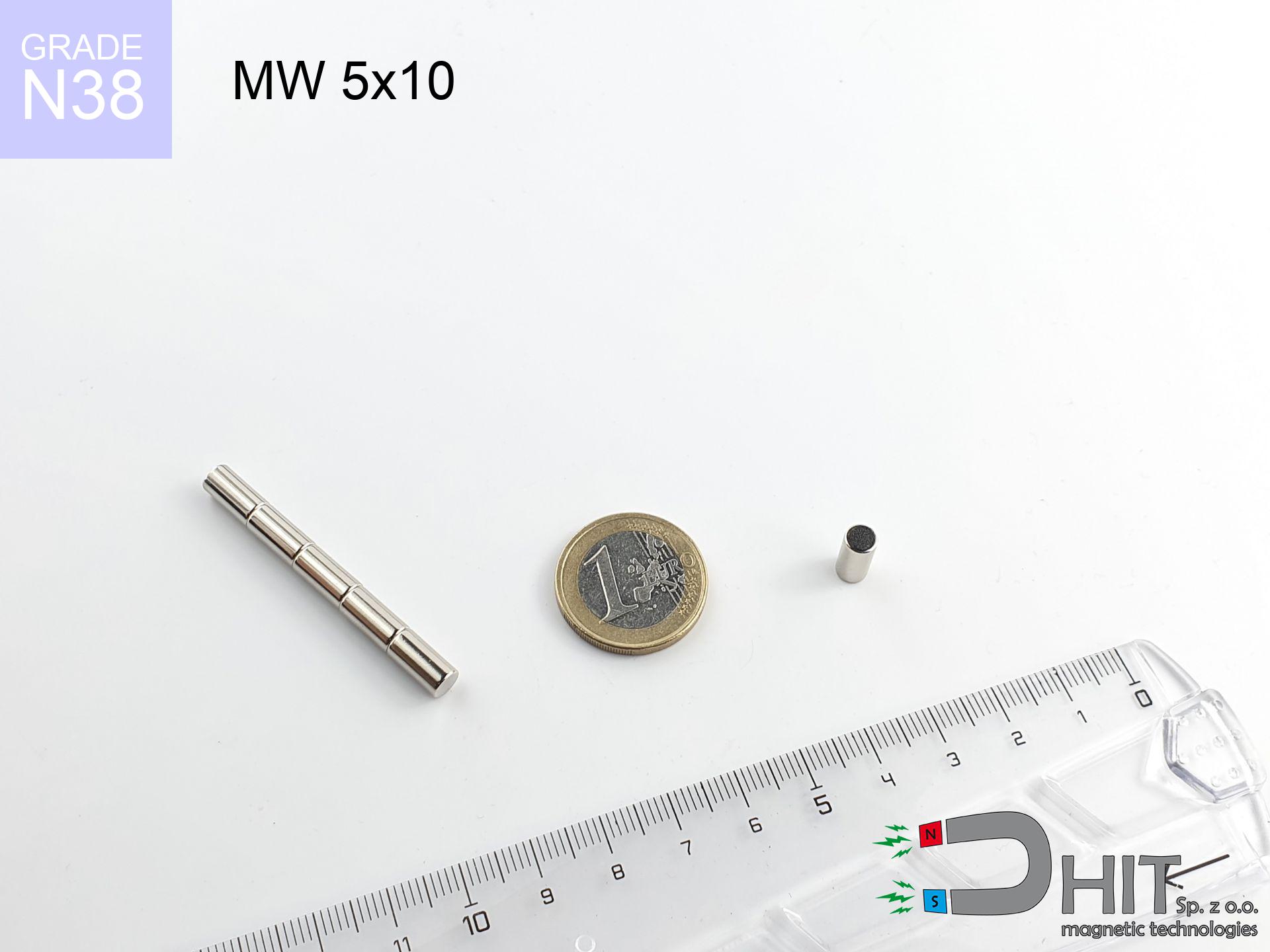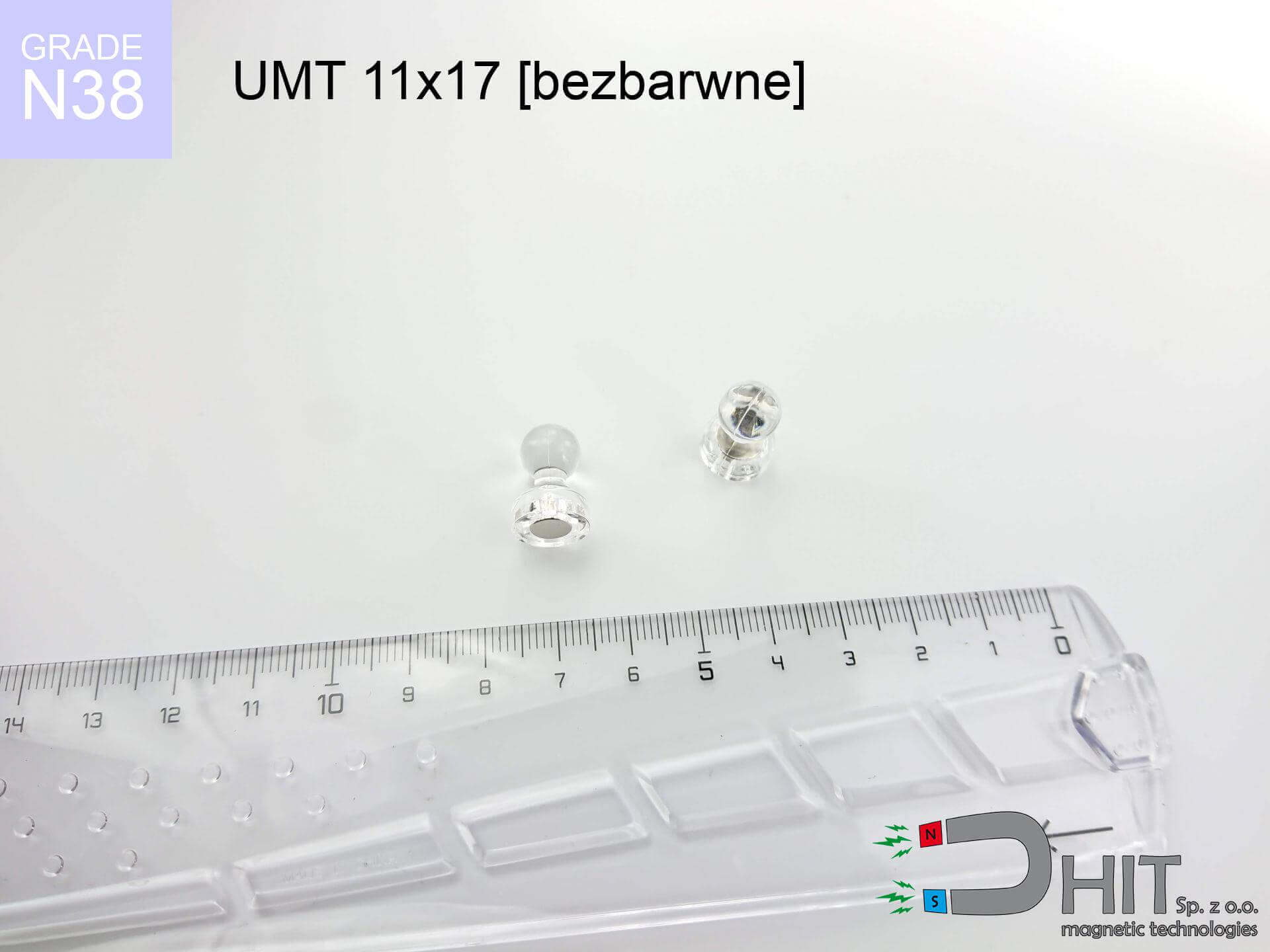MP 10x6x4 / N38 - neodymium magnet
ring magnet
catalog number 030179
GTIN: 5906301811961
external diameter Ø
10
mm [±0,1 mm]
internal diameter Ø
6
mm [±0,1 mm]
height
4
mm [±0,1 mm]
magnetizing direction
↑ axial
capacity ~
1.37 kg / 13.44 N
magnetic induction ~
108.09 mT / 1,081 Gs
max. temperature
≤ 80
°C
catalog number 030179
GTIN: 5906301811961
external diameter Ø
10 mm [±0,1 mm]
internal diameter Ø
6 mm [±0,1 mm]
height
4 mm [±0,1 mm]
magnetizing direction
↑ axial
capacity ~
1.37 kg / 13.44 N
magnetic induction ~
108.09 mT / 1,081 Gs
max. temperature
≤ 80 °C
0.90 ZŁ gross price (including VAT) / pcs +
0.73 ZŁ net price + 23% VAT / pcs
bulk discounts:
need more quantity?Want to talk about magnets?
Give us a call tel: +48 888 99 98 98 or contact us via form on the contact page. You can check the power and the appearance of neodymium magnets in our power calculator power calculator
Orders placed by 2:00 PM will be shipped on the same business day.
Specification: ring magnet 10x6x4 / N38 ↑ axial
Magnetic properties of the material N38
Physical properties of sintered neodymium magnets Nd2Fe14B
List recommended items
Advantages and disadvantages of neodymium magnets NdFeB.
Apart from immense strength, neodymium magnets have the following advantages:
- They do not lose strength over time. After approximately 10 years, their strength decreases by only ~1% (theoretically),
- They protect against demagnetization caused by external magnetic field very well,
- In other words, thanks to the shiny nickel, gold, or silver finish, the element gains an visually attractive appearance,
- They have very high magnetic induction on the surface of the magnet,
- Magnetic neodymium magnets are characterized by hugely high magnetic induction on the surface of the magnet and can operate (depending on the form) even at temperatures of 230°C or higher...
- Thanks to the flexibility in shaping and the ability to adapt to specific requirements – neodymium magnets can be produced in a wide range of shapes and sizes, which enhances their versatility in applications.
- Significant importance in advanced technologically fields – find application in HDD drives, electric motors, medical devices and other highly developed apparatuses.
Disadvantages of neodymium magnets:
- They can break when subjected to a powerful impact. If the magnets are exposed to impacts, we recommend using magnets in a protective case. The steel housing in the form of a holder protects the magnet from impacts, and at the same time increases its overall strength,
- They lose power at high temperatures. Most neodymium magnets experience permanent loss of strength when heated above 80°C (depending on the shape and height). However, we also offer special magnets with high temperature resistance, up to 230°C,
- Magnets exposed to a humid environment can corrode. Therefore, when using them outdoors, we recommend using waterproof magnets made of rubber, plastic, or other moisture-resistant materials,
- Limited ability to create threads or complex shapes in the magnet - the use of a housing is recommended - magnetic holder
- Possible danger associated with microscopic parts of magnets pose a threat, when accidentally ingested, which is crucial in the context of child safety. Additionally, small elements of these magnets have the potential to be problematic in medical diagnosis in case of swallowing.
Handle Neodymium Magnets Carefully
Neodymium magnets can become demagnetized at high temperatures.
Although magnets have demonstrated their effectiveness up to 80°C or 175°F, the temperature can vary depending on the type, shape, and intended use of the specific magnet.
Neodymium magnets are the most powerful, most remarkable magnets on earth, and the surprising force between them can shock you at first.
Familiarize yourself with our information to correctly handle these magnets and avoid significant swellings to your body and prevent disruption to the magnets.
Dust and powder from neodymium magnets are flammable.
Do not attempt to drill into neodymium magnets. Mechanical processing is also not recommended. If the magnet is crushed into fine powder or dust, it becomes highly flammable.
Neodymium magnetic are known for their fragility, which can cause them to crumble.
In the event of a collision between two neodymium magnets, it can result in them getting chipped. They are coated with a shiny nickel plating similar to steel, but they are not as hard. At the moment of connection between the magnets, small sharp metal pieces can be propelled in various directions at high speed. Eye protection is recommended.
Neodymium magnets should not be near people with pacemakers.
Neodymium magnets generate strong magnetic fields. As a result, they interfere with the operation of a pacemaker. This is because many of these devices are equipped with a function that deactivates the device in a magnetic field.
Avoid contact with neodymium magnets if you have a nickel allergy.
Studies show a small percentage of people have allergies to certain metals, including nickel. An allergic reaction often manifests as skin redness and rash. If you have a nickel allergy, try wearing gloves or avoid direct contact with nickel-plated neodymium magnets.
Magnets will attract to each other, so remember not to allow them to pinch together without control or place your fingers in their path.
Magnets will bounce and contact together within a distance of several to around 10 cm from each other.
Never bring neodymium magnets close to a phone and GPS.
Intense magnetic fields generated by neodymium magnets interfere with compasses and magnetometers used in navigation, as well as internal compasses of smartphones and GPS devices.
Keep neodymium magnets away from TV, wallet, and computer HDD.
Strong magnetic fields emitted by neodymium magnets can destroy magnetic storage media such as floppy disks, credit cards, magnetic ID cards, cassette tapes, video tapes, or other devices. They can also damage televisions, VCRs, computer monitors, and CRT displays. You should especially avoid placing neodymium magnets near electronic devices.
Magnets are not toys, youngest should not play with them.
Remember that neodymium magnets are not toys. Do not allow children to play with them. In the case of swallowing multiple magnets simultaneously, they can attract to each other through the intestinal walls. In the worst case scenario, this can lead to death.
In order for you to know how powerful neodymium magnets are and why they are so dangerous, see the article - Dangerous very strong neodymium magnets.



![magnetic beam 750x180x70 [4x M8] magnetic beam 750x180x70 [4x M8]](https://cdn3.dhit.pl/graphics/products/bm-750x180x70-4x-m8-zif.jpg)


![magnetic separator 32x400 [2xM8] / N42 magnetic separator 32x400 [2xM8] / N42](https://cdn3.dhit.pl/graphics/products/sm-32x400-2xm8-tep.jpg)

